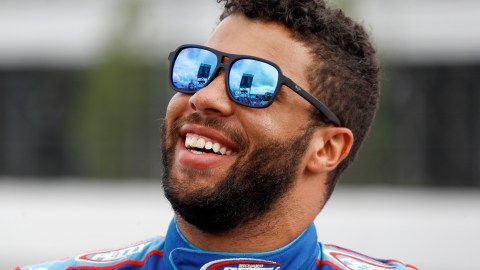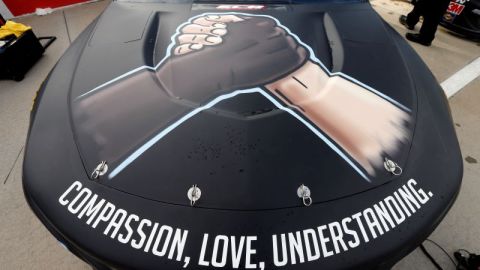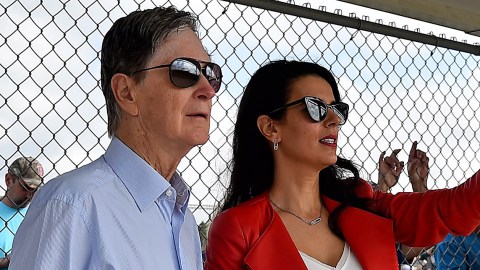 Jabari Parker, Joel Embiid and Andrew Wiggins skipping the 2014 NBA draft combine will take a bit of the luster out of the proceedings in Chicago. Still, scouts and executives will have plenty of talent to parse and over-analyze for the two-day event, beginning Thursday.
Jabari Parker, Joel Embiid and Andrew Wiggins skipping the 2014 NBA draft combine will take a bit of the luster out of the proceedings in Chicago. Still, scouts and executives will have plenty of talent to parse and over-analyze for the two-day event, beginning Thursday.
The top three prospects’ absences underscore the perceived truth about the combine: It is not always a good thing for the players. One bad test and a once-in-a-generation talent could be downgraded. One bad physical and a blue-chipper could earn a devastating medical red flag.
At least, that is what some agents tell their complicit clients.
In all likelihood, the combine will not significantly alter any team’s opinion of a prospect one way or another. NBA teams spend a lot of money on scouting departments to make sure they know every little detail of every player’s life well before this point. Yet some players could nudge up or down a slot or two, depending on how they fare.
Here is a look at those who should be champing at the bit to take part in the drills, and those who should be wary.
Most to gain
Zach LaVine, UCLA. First, a theme that will run through this analysis: Prospects with strong measurables like vertical leap or pure strength are likely to bolster their stock more than those who just flat-out know how to play. LaVine is one of the blueprints for the former type of player. Although his scoring is streaky, LaVine will nail the jumping and agility tests, which might cause a few teams to rethink their positioning of the late-first-rounder.
Nick Johnson, Arizona. He was the Pac-12 Conference player of the year, but the 6-foot-3 shooting guard generally isn’t rated higher than the early second round. It’s time for Johnson to remind people why they fell in love with him at Arizona. He can’t change his height, but his deficiencies as a playmaker won’t be on display at the combine. Rather, scouts will be evaluating his athletic abilities, which are off the charts.
Elfrid Payton, Louisiana-Lafayette. Shooting percentages and turnover rates are not the focus in Chicago. Long and lanky, with the ability to downshift for a quick burst of acceleration, Payton could knock the speed and agility tests out of the park and move up in the post-lottery portion of the first round.
Isaiah Austin, Baylor. On paper, a 7-foot-1 prospect with 3-point range is top-three pick material. But Austin is absurdly light (he weighs just five pounds more than Michigan State’s Gary Harris, who is nine inches shorter) and is legally blind in one eye. Still, in one-on-one drills and interviews, Austin might be able to convince teams that his other skills outweigh his detriments.
K.J. McDaniels, Clemson. Depending on which Clemson game you caught this season, McDaniels is either the most maddening or exciting player in the draft. The 6-foot-6 swingman could fly out of control or disappear into the background at the snap of a finger, but he is liable to ace the sprinting and jumping tests.
Most to lose
T.J. Warren, N.C. State. The Wolfpack sophomore has decent size for an NBA small forward at 6-foot-8, 215 pounds, and he knows how to score. He averaged 24.9 points per game, despite not always looking so fluid doing it. Yet with five-on-five scrimmaging a lost art at the combine, Warren won’t have a chance to show his nose for the hoop in live action.
Rodney Hood, Duke. His left-handed shooting stroke is as sweet as there is in this draft, but basketball skills are secondary at the combine. Hood allegedly has short arms for his 6-foot-8 frame, and he didn’t flash the greatest speed, which could hurt him when scouts whip out the tape measure and stopwatch.
Gary Harris, Michigan State. One of the best shot-makers in the draft, Harris made a lot of plays most 6-foot-4 shooting guards don’t make and helped the Spartans win a couple of games they probably shouldn’t have won. He is somewhat small for a pro two-guard, however, and he doesn’t jump out of the building. A fierce competitive instinct probably won’t help him get higher in the standing vertical leap test.
Julius Randle, Kentucky. Short arms … slightly undersized … explosive but not smooth … extremely left-hand dominant. The knocks on Randle abound, despite a general consensus that he is at worst a top-six pick. Nit-picking happens with every highly rated prospect, but people’s memories of Randle’s on-court ferocity gradually are fading and being replaced by hard data. This could be why Randle reportedly has said he will not participate in drills.
Tyler Ennis, Syracuse. Watching Ennis in action is watching the point guard position the way it was meant to be played. At 6-foot-2, 180 pounds, he stacks up nicely against pro points, provided combine measurements don’t rob him of an inch or two. His athletic gifts won’t wow anybody, however, so hopefully NBA teams remember what a joy he is to watch when he’s actually, you know, playing. Perhaps because of this, Ennis is another of a handful of players who have opted out of the drills.
Photo via Twitter/@TwoThreeHoops



